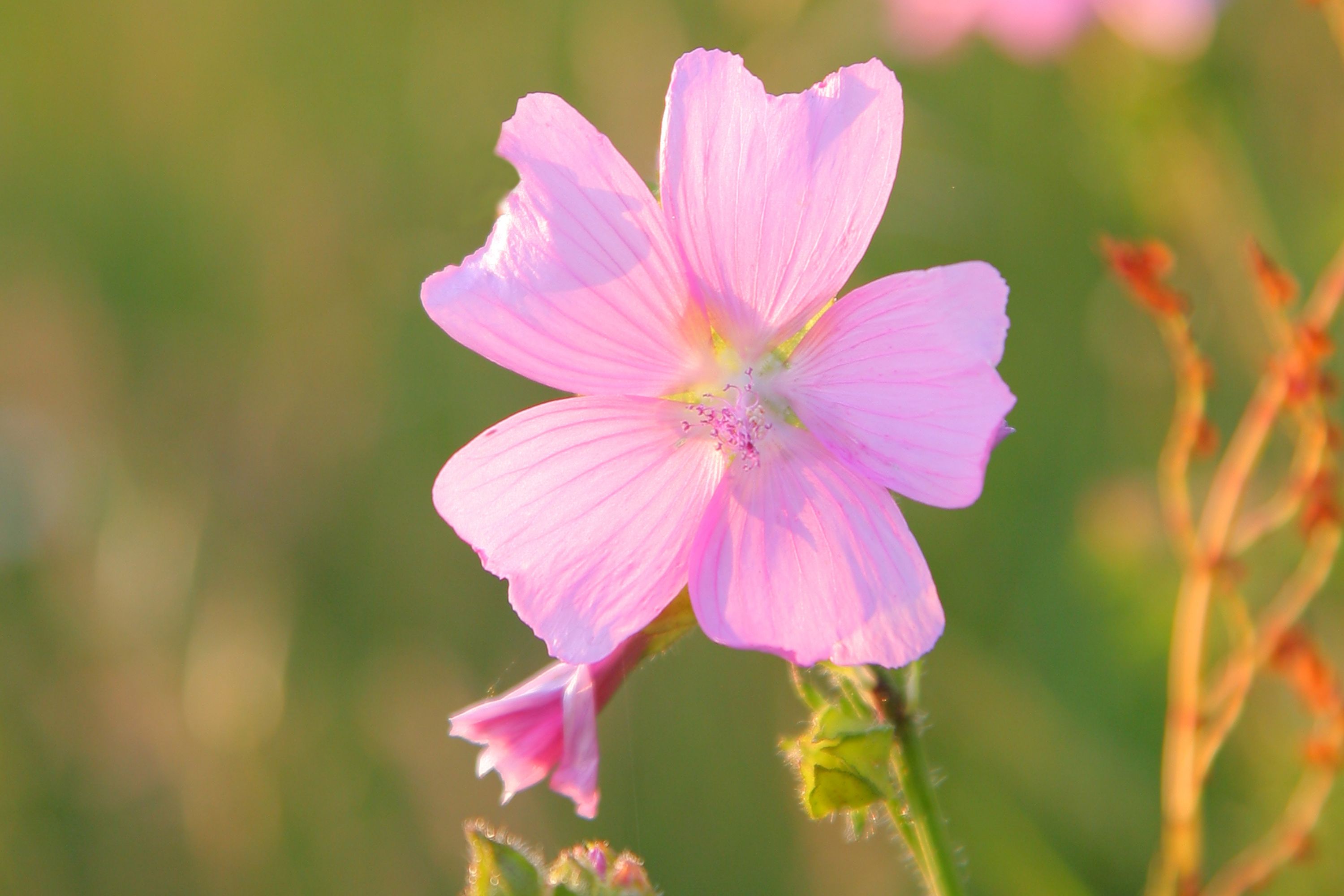Musk mallow
(Malva moschata)

Description
Malva moschata, commonly known as Musk Mallow, is a herbaceous perennial plant species belonging to the family Malvaceae. It is a popular ornamental plant due to its beautiful and fragrant flowers, which make it an excellent choice for garden borders and rockeries. In this article, we will explore the various aspects of Malva moschata, including its description, distribution, growth requirements, cultivation, and uses. Description Malva moschata is a herbaceous perennial plant that can grow up to 1m tall. The plant has a sprawling growth habit, and its stems are covered with short, soft hairs. The leaves are green, round to kidney-shaped, and have shallow, serrated edges. The plant produces a profusion of fragrant flowers in summer, which are typically pink or white, but can also be pale purple. Each flower has five petals and a central column of fused stamens. The flowers are followed by small, round fruits that contain numerous seeds. Distribution Malva moschata is native to Europe and western Asia, where it grows in meadows, hedgerows, and along roadsides. It has been introduced to other parts of the world, including North America, where it is considered an invasive species in some areas. In the wild, the plant is often found growing in large colonies, forming dense mats that can crowd out other vegetation. Growth Requirements Malva moschata is a hardy plant that can tolerate a range of growing conditions. It prefers well-drained soil that is rich in organic matter and neutral to slightly acidic in pH. The plant can grow in full sun to partial shade and is tolerant of drought and moderate frost. It is also tolerant of salt spray, making it a good choice for coastal gardens. Cultivation Malva moschata is a popular garden plant that is easy to grow from seed or by dividing established clumps. Seeds can be sown directly in the ground in early spring, or indoors in pots 6 to 8 weeks before the last frost. The seedlings should be transplanted outdoors when they are large enough to handle, and the danger of frost has passed. Established plants can also be divided in early spring or fall, and replanted in a new location. The plant should be watered regularly during dry periods and deadheaded regularly to promote continuous blooming. Uses Malva moschata has a range of uses, both ornamental and medicinal. The fragrant flowers and attractive foliage make it an excellent choice for garden borders and rockeries, where it can be used to add color and texture to the landscape. The plant is also a good choice for attracting pollinators such as bees and butterflies. In traditional medicine, the plant has been used to treat a variety of ailments, including respiratory infections, digestive disorders, and skin irritations. The leaves and flowers can be brewed into a tea, which is said to have a soothing effect on the body. In conclusion, Malva moschata is a beautiful and versatile plant species that can add a touch of color and fragrance to any garden. Its ease of cultivation and tolerance of a range of growing conditions make it a popular choice among gardeners. Additionally, its medicinal properties make it a useful plant to have on hand for home remedies. Whether you are an avid gardener or a lover of nature, Malva moschata is a plant that is sure to delight.
Taxonomic tree:







